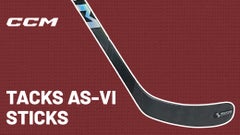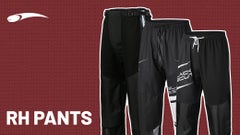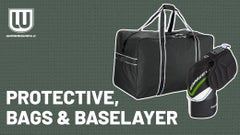How to Select a Goalie Stick
With so many different options of goalie sticks on the market, it can be hard to narrow down which one is best suited for your game. The video below is a quick guide that will help eliminate choices and steer you in the right direction.
Wood Sticks
Wood sticks are still very popular among goalies today in all levels of hockey. They are generally heavier than other sticks on the market but are better in other areas of performance. Wood sticks dampen the vibration from hard shots and provide the best rebound control out of the three. They offer good durability, classic puck feel, and are usually reinforced with fiberglass.
Composite Sticks
Composite goalie sticks are the lightest and most technologically advanced on the market. They are built with high-end materials such as carbon fiber to reduce weight, increase durability, and fine-tune the balance in the hand. These sticks will also improve a goalie's quickness, especially when playing the puck.
Foam Core Sticks
Foam Core goalie sticks are a nice balance between wood and composite sticks. They offer a lightweight construction with great puck dampening properties. Lined with thin wood and injected with a foam core, they are well balanced, responsive, and provide great rebound control.

Choosing Which Hand to Use
Once you have decided which goalie stick to use, the last step is to decide which hand will be holding the stick. Generally, the dominant hand holds the stick and wears the blocker, while the other hand uses the catcher to make the glove save.
Regular:
This is the most common choice among goaltenders. The stick is held in the right hand and the goalie catches with their left hand. The curve is shaped in the same direction as a player's left-handed stick.
Full Right:
Less common, the stick is held in the left hand and the goalie catches with their right hand. The curve is shaped in the same direction as a player's right-handed stick.







